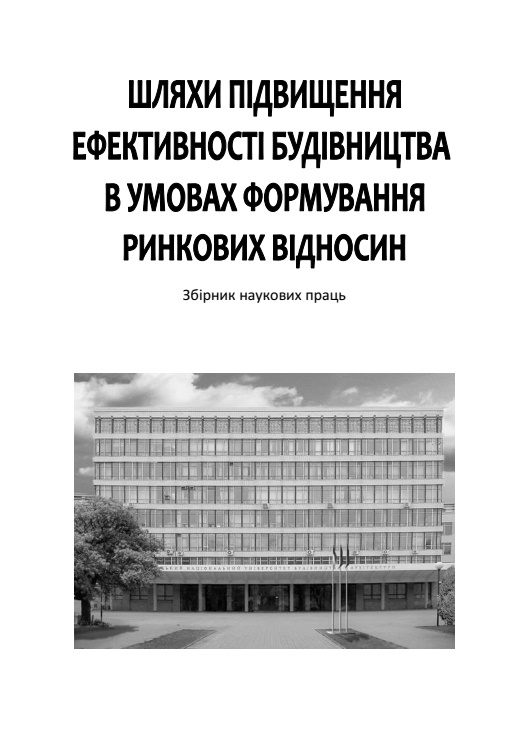Method of evaluating the effectiveness of use of resources construction
DOI:
https://doi.org/10.32347/2707-501x.2015.33.166-175Keywords:
building, resource management, forecasting, expert system, resource software, resource flows.Abstract
The article analyzes the general state of the resource potential and management of resource maintenance of construction, an evaluation of the efficiency of resource use, prediction of resource flows, resource planning.
The study used the following methods: analysis and synthesis, sample surveys - to get the data of the supply of construction, a systematic approach (in establishing the relationship components of the mechanism of resource maintenance of building enterprise), fractal analysis, adaptive model.
References
Ушацький С.А. Організація будівництва/ С.А. Ушацький, Ю.П. Шейко, Г.М. Тригер: Підручник. – К., 2007. – 521 с.
Мандельброт Б. Фрактальная геометрия природы / Б. Мандельброт. — М.: Институт компьютерных исследований, 2002. — 656.
Дубінін Д.В. Методика удосконалення організаційної структури управління будівельного підприємства шляхом формування системи інформаційного забезпечення /Д.В.Дубінін// Шляхи підвищення ефективності будівництва в умовах формування ринкових відносин.: зб. наукових праць. – вип.32. – 2014. – С.250 – 254.
Стрижак Т. Г., Коновалова Н. Р. Математический анализ. — К.: Либідь, 1995. — 240 с.
Асаул А.Н. Формирование и оценка организационных структур управления в компаниях инвестиционно-строительного комплекса[Текст] / А.Н. Асаул, Н.А. Асаул, А.В. Симеонов // – СПб.: ГАСУ. - 2009 -258 с.
Зельцер Р. Я. Эффективность использования средств малой механизации в строительстве УССР[Текст]/ А. И. Миняйленко, Р. Я. Зельцер. - 33 с.
Downloads
How to Cite
Issue
Section
License
Copyright (c) 2020 D. Dubinin

This work is licensed under a Creative Commons Attribution 4.0 International License.
Authors who publish with this journal agree to the following terms:
- Authors retain copyright and grant the journal right of first publication with the work simultaneously licensed under a Creative Commons Attribution License that allows others to share the work with an acknowledgement of the work's authorship and initial publication in this journal.
- Authors are able to enter into separate, additional contractual arrangements for the non-exclusive distribution of the journal's published version of the work (e.g., post it to an institutional repository or publish it in a book), with an acknowledgement of its initial publication in this journal.
- Authors are permitted and encouraged to post their work online (e.g., in institutional repositories or on their website) prior to and during the submission process, as it can lead to productive exchanges, as well as earlier and greater citation of published work (See The Effect of Open Access).

